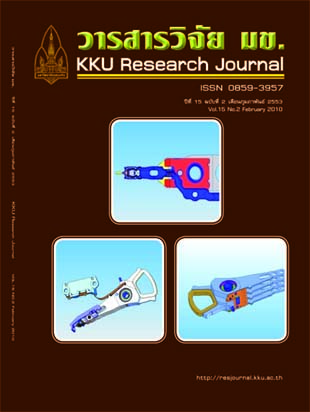A study of the head stacks assembly (HSA) during the swaging process: optimization of the ball velocity
Main Article Content
Abstract
This research studied the head stack assembly (HSA) swaging process, focusing on the head gimbal assembly (HGA) and the actuator arm. This process uses a ball which is swaged through a base plate, a component of the HGA, to expand and plastically deform the base plate, causing the base plate to adjoin with the actuator arm. There are many variations in parameters which affect the manufacturing process. Therefore, the aim of this research was to study the optimum velocity of the ball in order to increase the efficiency of the manufacturing process. The prediction of the stress behavior during the swaging process was analyzed by using the finite element method. The results showed that the retention torque was increased when both the coefficient of friction between the ball and the base plate and the ball velocity were increased. The optimum parameters that increased the efficiency of the process were found to be a ball velocity and a coefficient of friction between the ball and the base plate with values of 40 m/s and 0.08, respectively.
Article Details
How to Cite
Tangchaichit, K., & Kaewka, W. (2017). A study of the head stacks assembly (HSA) during the swaging process: optimization of the ball velocity. Asia-Pacific Journal of Science and Technology, 15(2), 104–112. retrieved from https://so01.tci-thaijo.org/index.php/APST/article/view/83144
Section
Research Articles


